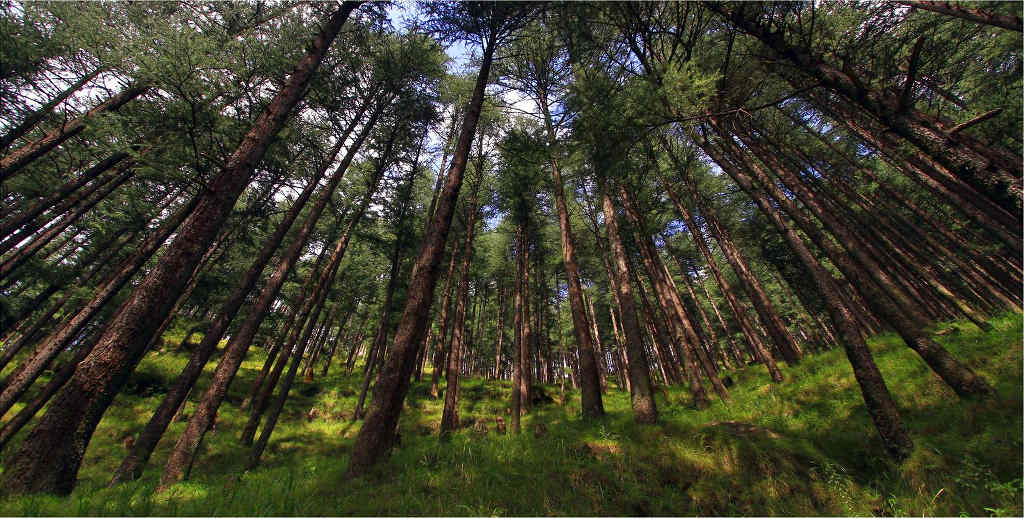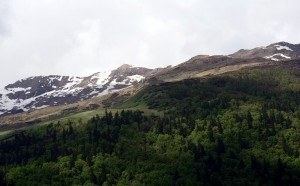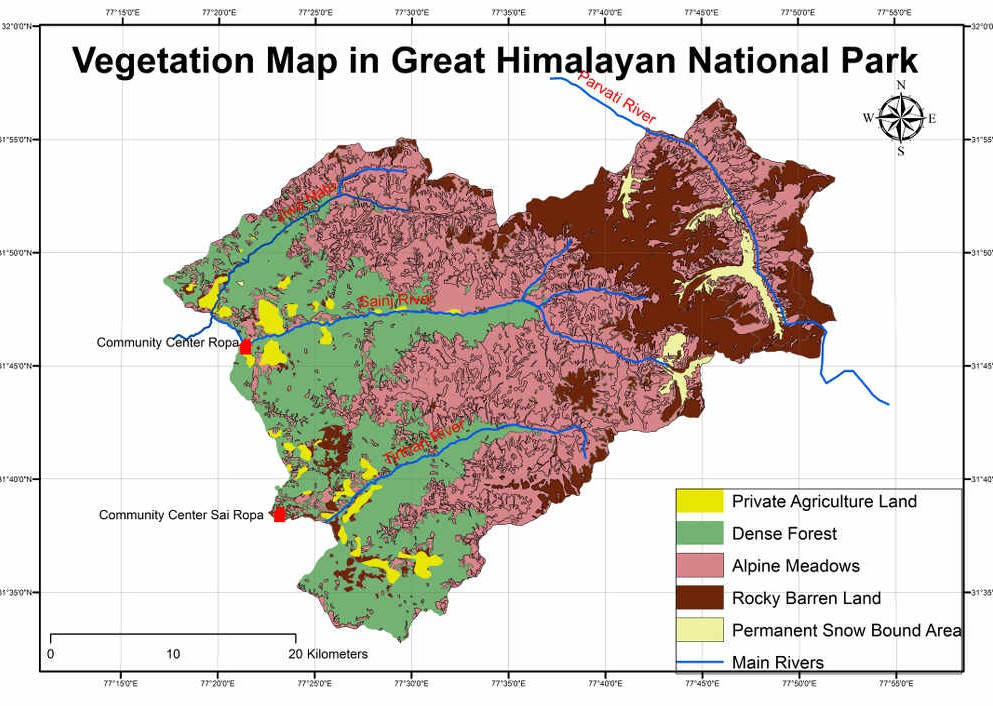
Biogeography
Biogeography of the Great Himalayan National Park | GHNP
The biogeography of the Great Himalayan National Park is shaped by its unique position at the junction of two major faunal realms – the Indomalayan to the south and the Palaearctic to the north.
The park’s temperate forest flora and fauna mark the westernmost limit of the Sino-Japanese region, and its high-altitude ecosystem has floral affinities with, amongst others, the Mediterranean, Tibetan and Cis-Himalayan regions.
GHNP has the plant and tree species jatamansi, salam panja, and English yew, in common with Afghanistan and western China. It also shares the sea-buckthorn with the Palaearctic region, the deodar, alpine yellow violet and alpine meadow grass with the Mediterranean region, and the euphorbia with south India.
The biogeography of the Great Himalayan National Park illustrates its role as a transitional zone, hosting species from both tropical and temperate ecosystems.
Endemic flora and fauna have also evolved in the Northwestern Himalaya, including Draba lasiophylla Royle, several species of Balsams, and the Himalayan tahr, all of which are well represented in the park.
Because of its range of species, and the compact nature of their abode, GHNP is the highest priority conservation zone in the western Himalaya.
In addition to its diverse habitats, the biogeography of the Great Himalayan National Park supports critical conservation work. Its compact size and elevation gradient make GHNP a microcosm of the Himalayan biosphere. Species distribution across altitudes—from subtropical forests to alpine meadows—reflects evolutionary adaptation and ecological transitions rarely seen elsewhere. The park is also a vital corridor for migratory species and a gene bank for endemic Himalayan flora. These features not only support biodiversity preservation but also make GHNP a prime location for research, nature tourism, and environmental education.






